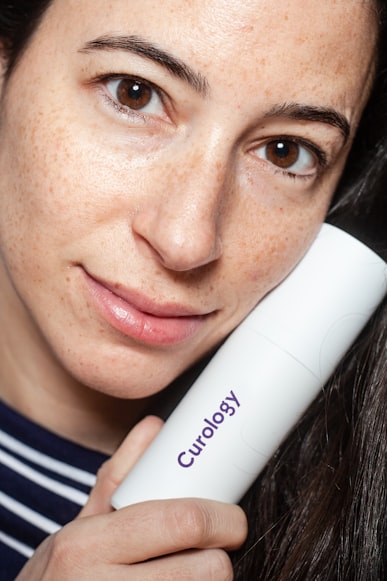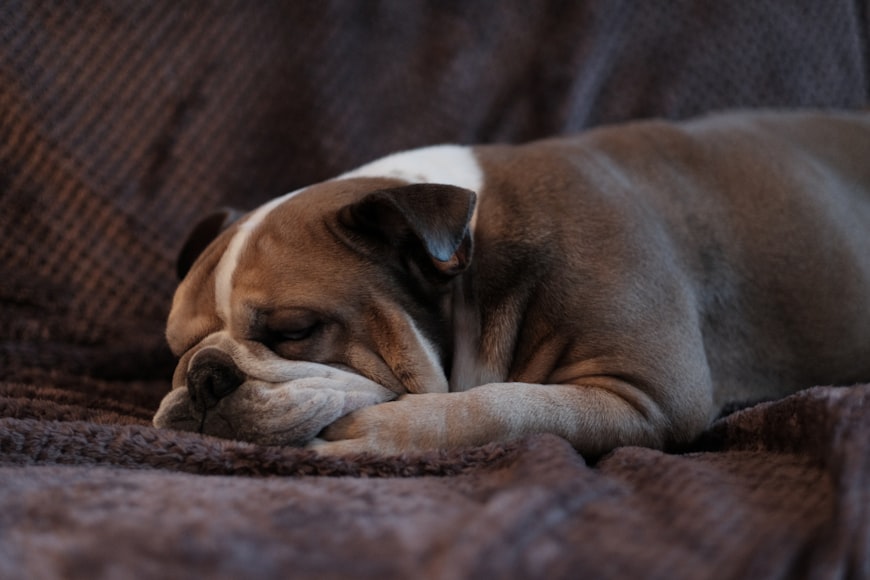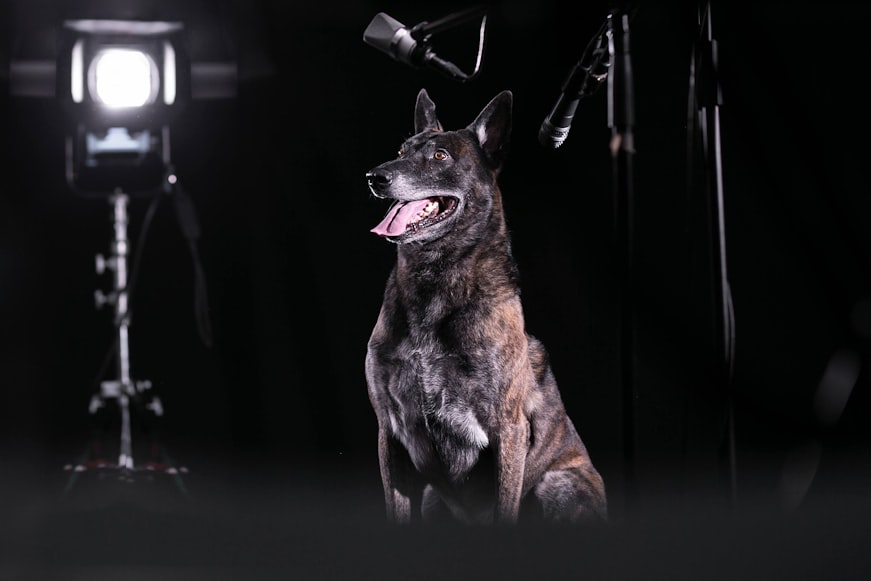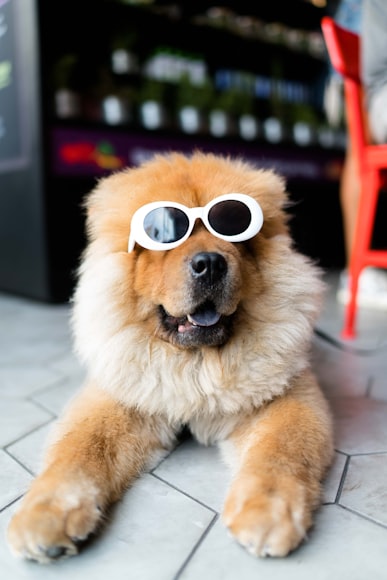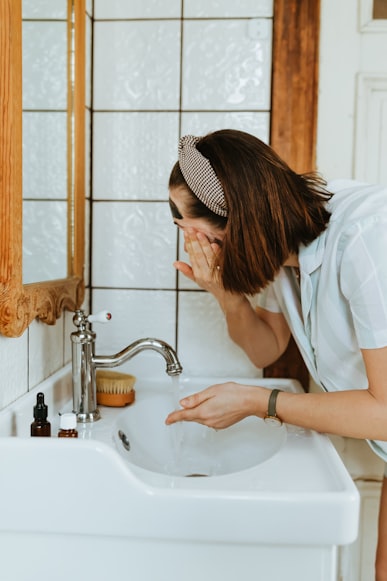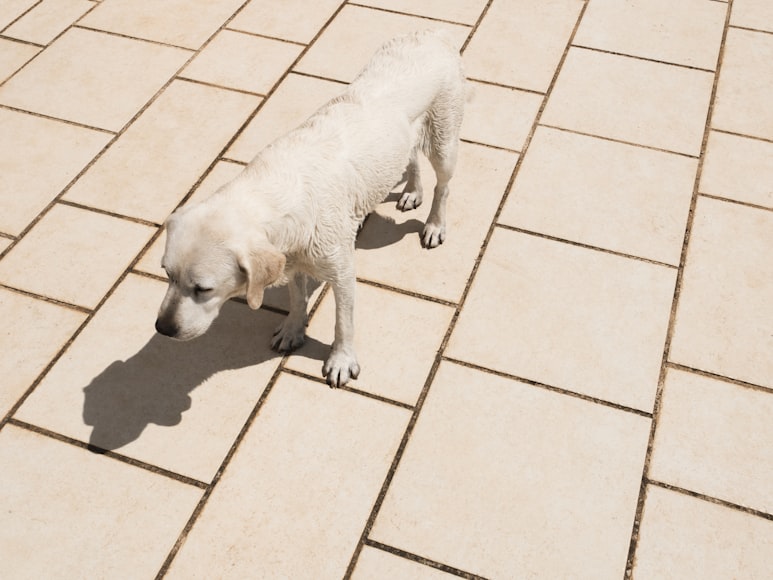How to Stop a Dog from Itching a Wound

It can be incredibly distressing to see your beloved canine companion scratching and licking an itchy wound. Not only can constant itching hinder healing, but it can also lead to further irritation, infection, and pain. Here’s a comprehensive guide to help you effectively stop your dog from itching a wound:
1. Identify the Cause:
Before addressing the itching, it’s crucial to determine the underlying cause of the wound. Common causes include allergies, parasites, infections, or physical injuries. Consulting with a veterinarian for an accurate diagnosis is essential for proper treatment and prevention of future episodes.
2. Veterinary Intervention:
In most cases, veterinary assistance is necessary to address the wound and manage the itching. The veterinarian may prescribe antibiotics, antihistamines, or pain relievers to alleviate inflammation and discomfort. Surgery may be necessary for more severe wounds or infections.
3. Elizabethan Collar (E-Collar):
An E-collar, also known as a cone of shame, is an effective physical barrier that prevents dogs from reaching and scratching their wounds. While it may appear awkward and restrictive, it’s an essential tool for wound healing. Ensure the collar fits snugly but doesn’t obstruct breathing or vision.
4. Bitter Spray or Topical Ointment:
Bitter sprays or topical ointments containing bitter substances can deter dogs from licking or scratching their wounds. These products are safe for use on dogs but unpleasant to their taste buds, discouraging further irritation.
5. Distractions and Exercise:
Providing your dog with distractions and engaging in physical activities can help shift their focus away from itching. Play games, offer treats, or take your dog for walks on a leash to channel their energy into positive outlets. Exercise can also release endorphins, which have pain-relieving effects.
6. Cooling Compresses:
Cold compresses can provide soothing relief for itchy wounds. Wrap an ice pack or a bag of frozen peas in a towel and apply it to the affected area for short intervals, several times a day. The cold reduces inflammation and numbs the pain, discouraging itching.
7. Oatmeal Baths:
Colloidal oatmeal baths have calming and anti-itching properties. Grind oatmeal into a fine powder and add it to your dog’s bathwater. Allow your dog to soak for 10-15 minutes before rinsing thoroughly. Pat dry and consider applying a soothing moisturizer to further hydrate the skin.
8. Avoid Over-bathing:
While occasional baths can help keep the wound clean, excessive bathing can remove essential oils and further irritate the skin. Unless instructed by your veterinarian, stick to bathing your dog only when necessary.
9. Inspect and Maintain the Wound:
Regularly inspect your dog’s wound for signs of infection, such as redness, swelling, or discharge. Keep the wound clean by gently flushing it with saline solution or using sterile gauze. Change dressings as directed by your veterinarian.
10. Patience and Consistency:
It’s important to be patient and consistent in your efforts to stop your dog from itching. The healing process takes time and may involve setbacks. Avoid punishing your dog for scratching, as this will only increase their anxiety. Instead, focus on providing positive reinforcement for good behavior.
Remember, your dog’s well-being is paramount. If you’re unable to control the itching or observe any signs of worsening, do not hesitate to seek veterinary attention promptly. By adhering to these tips, you can help your furry friend recover from their wound and restore their comfort and happiness.
Identify the Cause of the Itching

As a dog owner, it’s heartbreaking to see your furry friend scratching and licking at an itch that won’t go away. A persistent wound can be a source of discomfort and potential health complications for your pet. Stopping the itching is crucial to promoting healing and preventing further damage.
Step 1: Identify the Cause of the Itching
Before addressing the itching, it’s essential to determine its underlying cause. There are several possible reasons why a dog may be itching a wound:
-
Infection: A wound that has become infected can cause severe itching due to the presence of bacteria or other microorganisms. Signs of infection include redness, swelling, pus, and a foul odor.
-
Irritation: Contact with irritants such as chemicals, plants, or debris can lead to itching and discomfort. If the irritant is not removed, the itching will persist.
-
Allergic reaction: Some dogs have allergies to certain substances, and these allergies can manifest as skin irritation and itching. The allergens could be environmental, foodborne, or contact-related.
Step 2: Clean and Treat the Wound
Once the cause of the itching has been identified, the next step is to clean and treat the wound. This process involves the following steps:
-
Clean the wound: Gently clean the wound with a sterile gauze pad or cloth and warm water. Avoid using harsh soaps or disinfectants.
-
Apply antibiotic ointment: If the wound is infected, apply an over-the-counter antibiotic ointment to help prevent further infection.
-
Bandage the wound (if necessary): If the wound is extensive or located in an area where the dog can easily reach it, it may be necessary to bandage it to prevent further irritation and scratching.
-
Monitor the wound: Regularly check the wound for signs of improvement or worsening. If the wound does not show signs of healing within a few days or if it becomes more severe, seek veterinary attention.
Step 3: Stop the Itching
In addition to cleaning and treating the wound, there are several ways to reduce your dog’s itching:
-
Use an Elizabethan collar: An Elizabethan collar, also known as a cone, prevents your dog from reaching the wound and scratching it. This device is an effective way to stop the itching and allow the wound to heal properly.
-
Apply a cold compress: Applying a cold compress to the affected area can help reduce swelling and discomfort. Wrap a cold pack or ice cube in a towel and gently press it against the wound for 10-15 minutes at a time.
-
Give your dog a bath: Bathing your dog in lukewarm water with a gentle, hypoallergenic shampoo can help remove any irritants or allergens that may be causing the itching.
-
Use topical medications: Your veterinarian may prescribe topical medications, such as antihistamines or steroids, to reduce inflammation and itching.
Step 4: Prevent Recurrence
Once the wound has healed and the itching has subsided, it’s important to prevent future occurrences by addressing the underlying cause. This may involve:
-
Avoiding irritants: If your dog is prone to skin irritations, identify and avoid any potential irritants that could trigger the itching.
-
Managing allergies: If your dog has allergies, work with your veterinarian to identify the allergens and develop a treatment plan to manage them.
-
Regular grooming: Regular grooming helps keep your dog’s skin and coat clean and free of debris, which can reduce the risk of skin irritation and itching.
Conclusion
Stopping your dog from itching a wound is crucial for their comfort and well-being. By following these steps, you can identify the underlying cause, clean and treat the wound effectively, and reduce the itching. Prevention is equally important, and you should work with your veterinarian to address any underlying causes and prevent future recurrences. By taking these measures, you can ensure that your dog is healthy and happy.
Clean and Disinfect the Wound

As a loving dog owner, it’s distressing to witness your beloved companion struggle with an itchy wound. Their constant scratching can delay healing, introduce infection, and cause further discomfort. To alleviate their suffering, it’s crucial to take prompt action and implement effective strategies to prevent them from scratching the affected area. Here’s a comprehensive guide on how to stop your dog from itching a wound:
1. Clean and Disinfect the Wound:
-
Use warm water and a gentle antiseptic: Gently flush the wound with warm water to remove any dirt, debris, or foreign objects. Use a mild antiseptic solution, such as diluted chlorhexidine or povidone-iodine, to disinfect the area and prevent infection.
-
Avoid harsh chemicals and detergents: Household cleaners and harsh detergents can irritate the wound and worsen the itching. Stick to gentle, pet-safe products.
2. Protect the Wound:
-
Use a cone: A plastic or inflatable e-collar (cone) is an effective way to prevent your dog from reaching the wound. Choose a cone that fits snugly but allows them to eat and drink comfortably.
-
Create a barrier: If a cone is not possible, create a physical barrier around the wound using gauze, bandage, or a clean cloth. Secure it tightly to prevent your dog from removing it.
3. Soothe the Itch:
-
Apply a cold compress: A cold compress can help reduce inflammation and itching. Wrap an ice pack or a bag of frozen peas in a towel and apply it to the affected area for 10-15 minutes at a time.
-
Use a topical spray or cream: There are pet-safe topical sprays and creams available that contain anti-itch ingredients. These products can provide temporary relief from itching.
-
Administer antihistamines: In some cases, your veterinarian may prescribe antihistamines to reduce the allergic response and stop the itching.
4. Treat the Underlying Cause:
-
Identify and address allergies: Many wounds and rashes are caused by allergies. Work with your veterinarian to identify potential allergens and eliminate them from your dog’s environment.
-
Rule out other medical conditions: Sometimes, itching can be a symptom of an underlying medical condition, such as skin infections, parasites, or endocrine disorders. Consult your veterinarian for a thorough examination and appropriate diagnosis.
5. Other Tips:
-
Keep your dog’s nails trimmed: Long nails can scratch and irritate the wound. Trim your dog’s nails regularly to minimize the risk of further damage.
-
Provide a comfortable environment: Stress can exacerbate itching. Ensure your dog has a comfortable and stress-free environment to promote healing.
-
Consult a veterinarian: If your dog’s wound is severe, shows signs of infection, or does not improve despite home care, seek veterinary attention immediately.
Use an Antipruritic Spray or Ointment
Itching is a common and frustrating issue that can affect dogs with wounds. Not only can it cause discomfort to your furry friend, but it can also lead to complications if left untreated. Fortunately, there are various effective methods you can employ to alleviate your dog’s itchiness and promote healing.
1. Antipruritic Sprays and Ointments
Topical treatments, such as sprays and ointments, can be highly effective in soothing the itching associated with wounds. They contain antipruritic ingredients that work to reduce inflammation and provide relief from the irritating sensation.
When choosing an antipruritic spray or ointment, opt for those specifically formulated for dogs. Human products may contain ingredients that are harmful to your pet. Apply the treatment as directed by your veterinarian, avoiding contact with the eyes.
2. Oatmeal Baths
Oatmeal has long been recognized for its soothing and anti-inflammatory properties. A lukewarm oatmeal bath can work wonders in relieving itching and promoting skin health. To prepare an oatmeal bath, grind plain, uncooked oatmeal into a fine powder. Add the powder to warm water and let it steep for a few minutes. Once the water has cooled, immerse your dog in the bath for 10-15 minutes.
3. Antihistamines
Antihistamines are medications that block histamine, a chemical released by the body’s immune system that causes itching. They can be effective in reducing the severity of itching associated with wounds. However, antihistamines should only be given under the supervision of a veterinarian, as they can have side effects such as drowsiness.
4. Corticosteroids
Corticosteroids are potent anti-inflammatory medications that can provide significant relief from itching. They are available in both topical and oral formulations. Topical corticosteroids are applied directly to the wound, while oral corticosteroids are given by mouth.
Corticosteroids should be used cautiously and only under the guidance of a veterinarian. Prolonged use can lead to side effects such as skin irritation, weight gain, and suppression of the immune system.
5. Elizabethan Collars
If your dog is excessively licking or biting at its wound, an Elizabethan collar (also known as a cone) can prevent them from further irritating it. Elizabethan collars are uncomfortable at first, but they can be effective in preventing your dog from disturbing the wound and delaying healing.
6. Environmental Management
Certain environmental factors can contribute to itching in dogs. Hot and humid environments, for example, can make itching worse. Try to keep your dog in a cool, dry place and avoid exposing them to excessive heat or cold.
Additionally, ensure your dog’s bedding is clean and free of allergens that may irritate their skin.
7. Veterinary Examination
If your dog’s itching persists despite home remedies, it’s essential to consult with a veterinarian. Underlying medical conditions, such as allergies or infection, may be contributing to the problem. Your veterinarian will perform a thorough examination and recommend the appropriate treatment based on the underlying cause.
Conclusion
Itching can be a distressing symptom for dogs with wounds. By implementing the methods outlined in this article, you can effectively alleviate the discomfort and promote healing. Remember to consult with your veterinarian if your dog’s itching persists or if there are any signs of infection or other complications. With proper care and attention, you can help your furry friend recover and regain a comfortable and itch-free life.
Create a Diverting Toy
Itching is a common symptom of wounds in dogs, and while it’s understandable that your furry friend wants to alleviate discomfort, excessive itching can hinder the healing process and lead to further complications. As a responsible pet owner, it’s crucial to find effective ways to prevent your dog from scratching at their wound.
Understanding Why Dogs Itch Wounds
Itching is a natural response to the inflammatory process that occurs during wound healing. Inflammatory cells release chemicals that stimulate nerve endings, causing discomfort. Additionally, the wound itself, if not cleaned and bandaged properly, can become infected, leading to increased inflammation and itching.
Consequences of Excessive Itching
While scratching may provide temporary relief, it can ultimately worsen the wound. Dogs’ claws harbor bacteria that can be introduced into the wound, causing infection. Additionally, excessive itching can damage newly formed tissue, delaying healing and increasing the risk of scarring.
Prevention Techniques
1. Keep the Wound Clean and Dry:
Thoroughly clean the wound with a mild antiseptic solution and bandage it to protect it from dirt and debris. Keep the bandage dry to prevent infection.
2. Use an Elizabethan Collar:
Popularly known as the “cone of shame,” an Elizabethan collar prevents your dog from reaching the wound with their claws or teeth. It’s an effective but temporary solution to manage excessive itching.
3. Apply a Bitter Spray:
Spray a bitter-tasting solution around the wound to discourage your dog from licking or chewing. However, avoid using products containing alcohol or essential oils, which can irritate the wound.
4. Provide Adequate Exercise:
Give your dog plenty of exercise to burn off excess energy and reduce anxiety, which can contribute to itching.
5. Administer Anti-Itch Medication:
Your veterinarian may prescribe anti-inflammatory or antihistamine medications to reduce inflammation and itching. Follow the instructions carefully and avoid over-dosing.
6. Create a Diverting Toy:
Provide a frozen chew toy or an interactive puzzle to distract your dog from the wound. Mental and physical stimulation can help alleviate discomfort and redirect their attention.
7. Use a Lick Mat:
Spread your dog’s favorite soft food or treats on a lick mat to engage their tongue and provide a sensory distraction from the wound.
8. Seek Professional Help:
If home remedies fail or the wound shows signs of infection or excessive swelling, consult your veterinarian immediately. They may need to administer stronger medications, clean and dress the wound professionally, or conduct further tests to identify underlying causes.
Conclusion
Preventing your dog from itching a wound is essential for successful healing and recovery. By understanding the causes and consequences of excessive itching, and implementing the techniques outlined above, you can help your furry companion manage discomfort, promote wound healing, and prevent further complications. Always consult your veterinarian for guidance and professional advice if necessary.
Wear an Elizabethan Collar
It can be distressing to witness your furry companion suffering from a persistent itch at a wound. Constant scratching can delay healing, introduce infection, and cause immense discomfort to your beloved pet. If you find yourself in this situation, it’s crucial to address the issue promptly and effectively. This comprehensive guide will provide you with detailed strategies to help stop your dog from itching a wound and promote its speedy recovery.
1. Veterinary Consultation:
The first and foremost step is to schedule an appointment with your veterinarian. They will thoroughly examine the wound, determine the underlying cause, and recommend the appropriate treatment plan. It’s essential to follow their instructions diligently to ensure optimal healing.
2. Restrict Dog’s Access to the Wound:
One of the most important measures you can take is to prevent your dog from reaching and scratching the affected area. This can be achieved by using various methods:
a. Elizabethan Collar (Cone of Shame):
An Elizabethan collar is a plastic cone-shaped device that fits around the dog’s neck, preventing them from accessing the wound with their mouth or paws. This is an effective way to restrict scratching and promote faster healing.
b. Bandages and Wraps:
If the wound is located in an area that can be covered, apply a clean bandage or wrap to create a protective barrier. This will help keep the wound clean and prevent the dog from scratching it.
3. Oatmeal Baths:
Oatmeal has soothing and anti-itching properties that can provide relief to irritated skin. Create an oatmeal bath by grinding rolled oats into a fine powder and adding it to lukewarm water. Soak the dog’s wound in the bath for 10-15 minutes, then rinse thoroughly and pat dry.
4. Cold Compresses:
Cold compresses can help reduce inflammation and swelling, which can reduce the urge to scratch. Apply a cold compress to the wound for 10-15 minutes at a time, several times a day.
5. Topical Medications:
Your veterinarian may prescribe topical medications such as ointments or sprays to apply directly to the wound. These medications may contain antibiotics to prevent infection, anti-inflammatory agents to reduce swelling, or antihistamines to relieve itching.
6. Anti-Itch Sprays:
Over-the-counter anti-itch sprays can provide temporary relief from itching. However, it’s important to consult with your veterinarian before using any products, as some may contain ingredients that can irritate the wound or be harmful to your dog.
7. Medications:
In cases of severe or persistent itching, your veterinarian may prescribe oral medications such as antihistamines or corticosteroids to suppress the immune response and reduce inflammation. These medications should be administered as directed and only under veterinary supervision.
8. Environmental Modifications:
Certain environmental factors can worsen itching. Identify and eliminate any potential triggers such as excessive heat, cold, dryness, or allergens. Keep the affected area clean and well-ventilated to promote healing and reduce discomfort.
9. Distraction and Exercise:
Providing your dog with distractions and regular exercise can help take their mind off the itching. Play fetch, go for walks, or engage them in interactive games to redirect their attention and reduce the urge to scratch.
10. Patience and Consistency:
Stopping your dog from itching a wound can require patience and consistency. Follow the veterinarian’s instructions carefully, administer medications as prescribed, and provide support and comfort to your pet throughout the healing process. Avoid scolding or punishing your dog for scratching, as this may worsen the problem.
Remember, every dog is different, and the most effective treatment approach may vary. Consult with your veterinarian to determine the best strategy for your pet’s specific condition. By implementing the measures outlined in this guide, you can effectively stop your dog from itching a wound, promote faster healing, and restore their comfort and well-being.
Use Bitter Apple Spray
Pets, like our beloved canine companions, are prone to injuries and wounds that can cause discomfort and irritation. Itching is a natural response to a wound, as it helps clean and remove debris and promote healing. However, excessive itching can delay healing and lead to infections or further damage. As responsible pet owners, it’s crucial to understand how to prevent your dog from itching a wound effectively.
Understanding the Causes of Itching
Before delving into solutions, it’s essential to comprehend the underlying causes that trigger itching in dogs. Common causes include:
- Pain and Discomfort: Wounds can be painful, causing dogs to lick or chew the area to alleviate the discomfort.
- Infection: Bacterial or fungal infections can cause intense itching and irritation, leading to further tissue damage.
- Allergic Reactions: Contact with irritants or allergens can trigger allergic reactions, resulting in itching and inflammation.
- Parasites: Fleas, ticks, or mites can cause severe itching and discomfort.
- Anxiety or Stress: In some cases, dogs may itch wounds due to stress, anxiety, or boredom.
Preventing Itching with Bitter Apple Spray
Bitter apple spray is a safe and effective solution for deterring dogs from licking or chewing wounds. The active ingredient in bitter apple spray, denatonium benzoate, is extremely bitter to dogs and creates a negative association with the treated area. Here’s a step-by-step guide to using bitter apple spray:
- Preparation: Ensure the wound is clean and dry. Remove any debris or scabs using a soft cloth or gauze.
- Application: Apply a small amount of bitter apple spray around the wound, avoiding direct contact with the injured tissue. Use a cotton ball or swab to apply the spray gently.
- Frequency: Re-apply the spray every few hours or as needed to maintain its effectiveness. It may take time for your dog to learn the association between the bitter taste and the wound.
- Patience: Be patient and consistent with the application. It may take several days or weeks for your dog to stop itching the wound.
Additional Tips for Wound Management
In addition to using bitter apple spray, consider the following tips to promote healing and prevent itching:
- Keep the Wound Clean: Regular cleaning of the wound with a mild antiseptic solution or saline helps remove bacteria and debris.
- Apply a Bandage: Covering the wound with a bandage can protect it from further irritation and create a barrier against licking.
- Provide a Calming Environment: Reduce stress for your dog by providing a safe, comfortable, and anxiety-free environment.
- Seek Veterinary Attention: If the wound is severe, shows signs of infection, or doesn’t heal within a reasonable time, consult a veterinarian promptly.
Conclusion
Preventing your dog from itching a wound is crucial for proper healing and preventing further complications. By using bitter apple spray and implementing additional wound care practices, you can create a positive healing environment for your furry friend. Remember to be patient, consistent, and seek veterinary attention when necessary. By working together, you can ensure your dog’s recovery and well-being.
